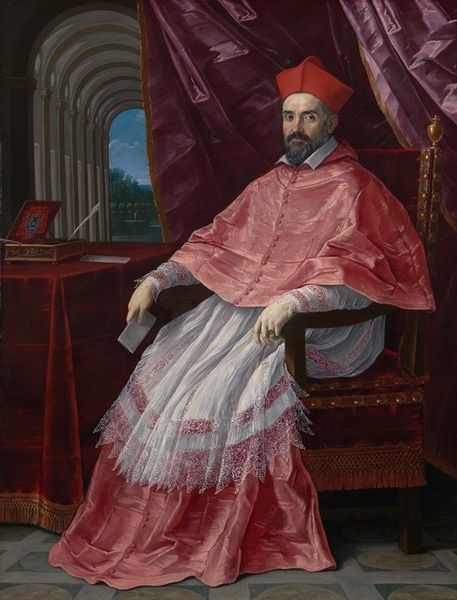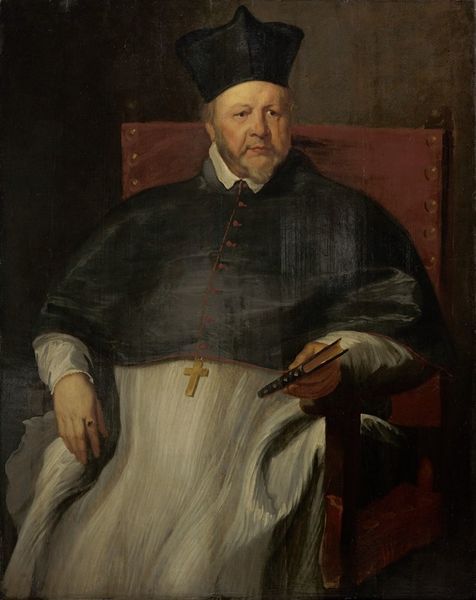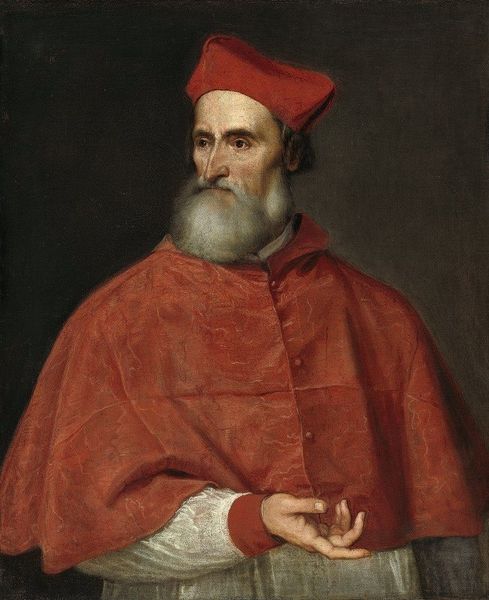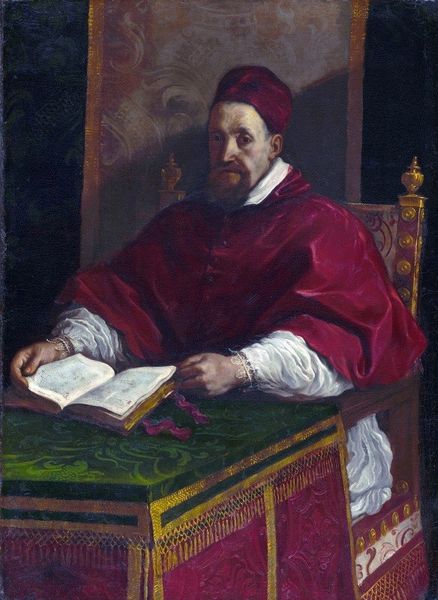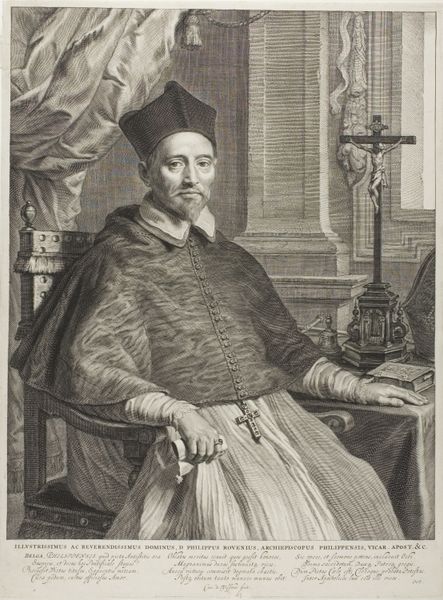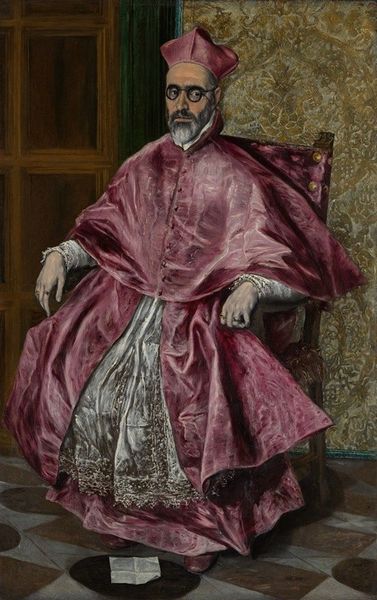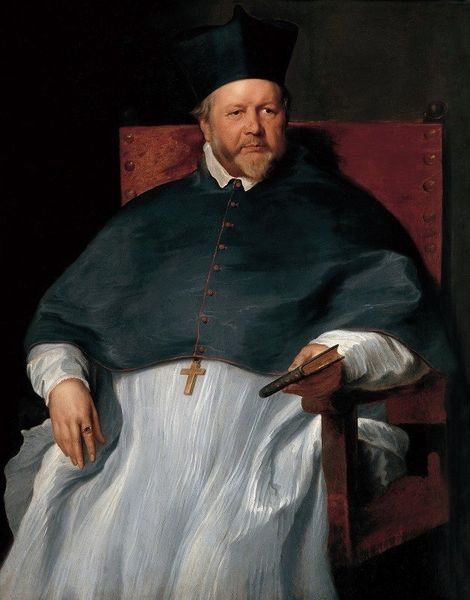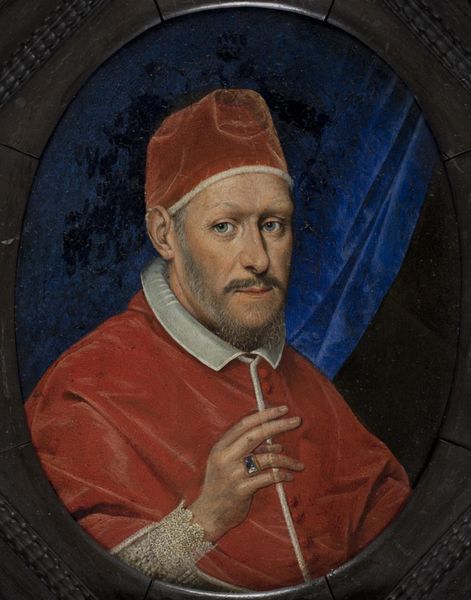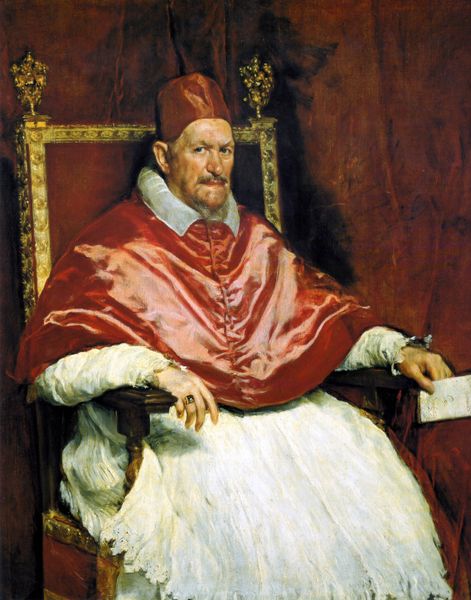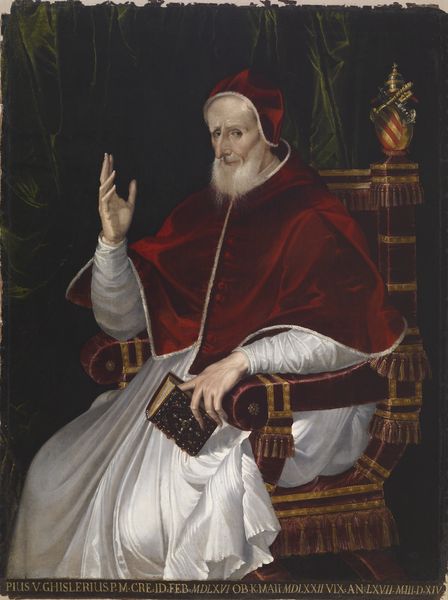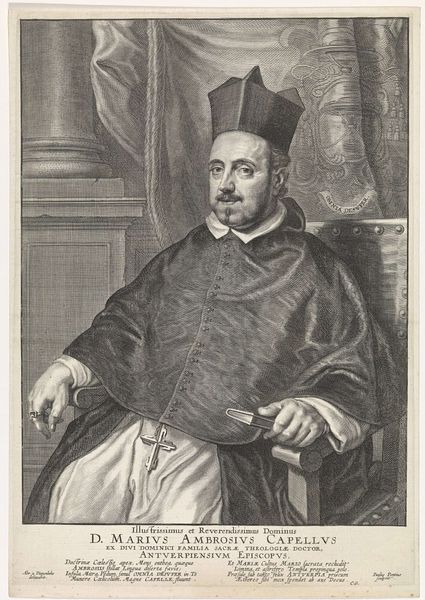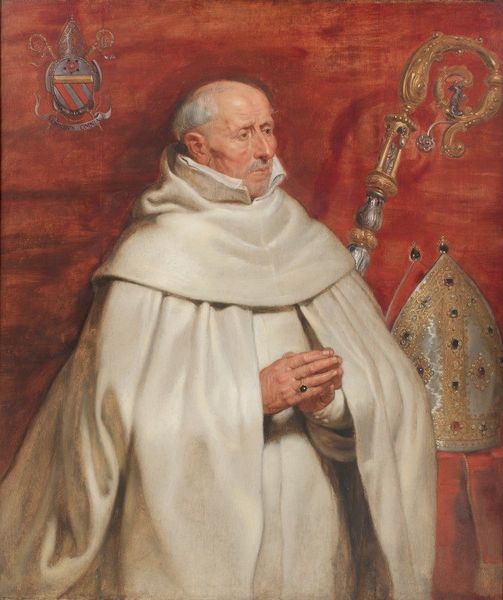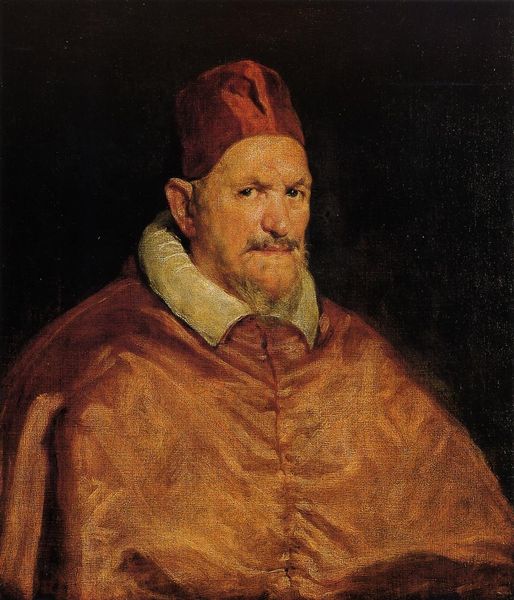
oil-paint
#
portrait
#
figurative
#
baroque
#
oil-paint
#
portrait reference
#
portrait head and shoulder
#
animal portrait
#
animal drawing portrait
#
portrait drawing
#
facial study
#
history-painting
#
facial portrait
#
academic-art
#
portrait art
#
fine art portrait
#
digital portrait
Copyright: Public Domain: Artvee
Editor: This is "Cardinal Francesco Cennini," painted by Guercino around 1625 using oil. I’m really drawn to the way the texture of the fabrics seems almost palpable. What stands out to you when you look at this portrait? Curator: It's fascinating to consider this work as a material document. Guercino was employed, paid for his labour and the inherent social dynamics involved in creating the opulent representation of a Cardinal. Look at the layering, the visible brushstrokes – how do these emphasize the production of the painting as a material object, rather than just a representation? Editor: So you’re focusing less on who the Cardinal *was* and more on *how* the painting came to be? Curator: Exactly! Think about the pigments used, where did they come from? The canvas – what kind of labour went into its preparation? The art isn't just what we see but an end result. These raw materials, shaped by human labor within a specific economic system, produce a luxurious commodity – a portrait. It is worth noting that portraits consolidated social capital. Editor: That’s a different way of looking at it than I expected! It’s interesting to think about the painting not just as art, but as a product of so many other things. The Cardinal could be said to be a ‘consumer’ of such production. Curator: Yes! The very act of patronage is itself a form of consumption of material and skill. Consider how the shimmering fabrics of the Cardinal's garments and even his facial features have only survived across the ages by becoming ‘thingified’ – materially enduring across history via the application of colour to surface! The ‘who’ of the sitter is only apparent because of all the material actions that made the ‘what’ that we see here. Editor: I hadn’t considered how the creation of the artwork itself represents economic and social power. That’s a great point to remember! Curator: Thinking about these aspects, labour, commodity, and consumption makes one think, beyond representation.
Comments
No comments
Be the first to comment and join the conversation on the ultimate creative platform.
